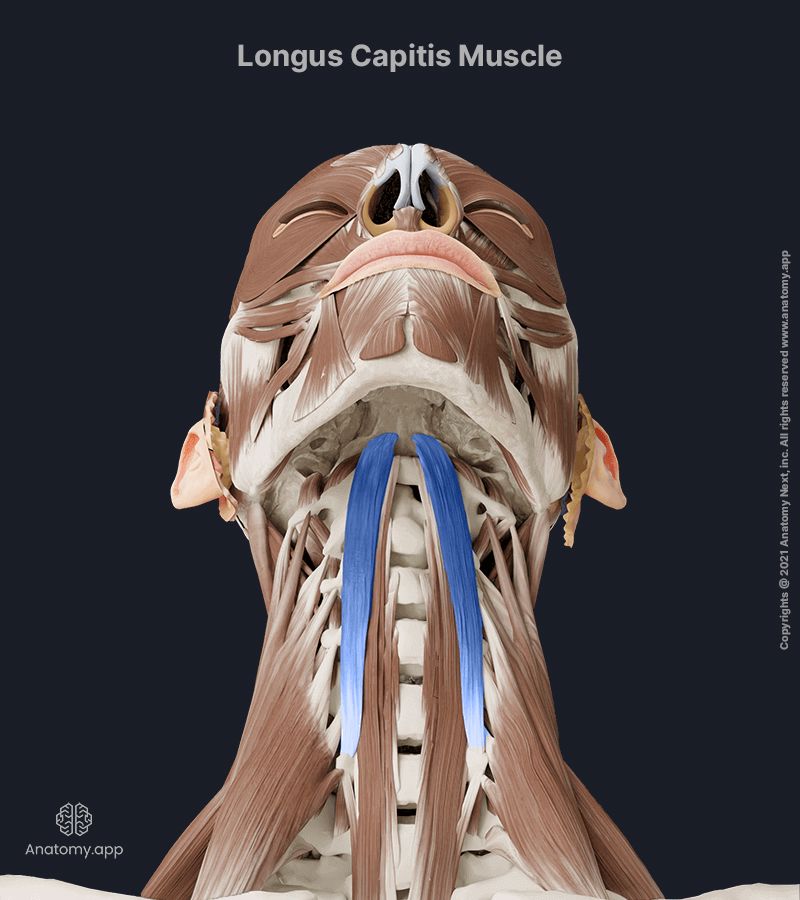- Anatomical terminology
- Skeletal system
- Joints
- Muscles
- Head muscles
-
Neck muscles
- Superficial neck muscles
- Scalene muscles
- Suprahyoid muscles
- Infrahyoid muscles
- Prevertebral muscles
- Suboccipital muscles
- Muscles of upper limb
- Thoracic muscles
- Muscles of back
- Muscles of lower limb
- Heart
- Blood vessels
- Lymphatic system
- Nervous system
- Respiratory system
- Digestive system
- Urinary system
- Female reproductive system
- Male reproductive system
- Endocrine glands
- Eye
- Ear
Longus capitis
The longus capitis (Latin: musculus longus capitis) is a slender and long deep muscle of the neck. It lies anterior to the spine. The longus capitis is known as one of the prevertebral neck muscles, and it is covered by the prevertebral layer of the cervical fascia. It also belongs to the anterior neck muscles. The longus capitis is involved in flexion and rotation of the head.
| Longus capitis | |
| Origin | Anterior tubercles of transverse processes of C3 - C6 vertebrae |
| Insertion | Basilar part of occipital bone |
| Action | Unilateral contractions - rotation of head (ipsilateral) Bilateral contractions - flexion of head and neck |
| Innervation | Anterior rami of 1st to 3rd cervical spinal nerves (C1 - C3) |
| Blood supply | Ascending cervical, inferior thyroid arteries |
Origin
The longus capitis muscle originates from the anterior tubercles of the transverse processes of the 3rd to 6th cervical vertebrae (C3 - C6).

Insertion
The longus capitis inserts on the basilar part of the occipital bone.
Action
By contracting on both sides, the longus capitis muscle flexes the head and neck. By contracting on one side, the activated muscle rotates the head to the ipsilateral side.
Innervation
The longus capitis is innervated by the anterior rami of the 1st to 3rd cervical spinal nerves (C1 - C3).
Blood supply
The longus capitis muscle receives arterial blood supply from the muscular branches of the ascending cervical and inferior thyroid arteries.